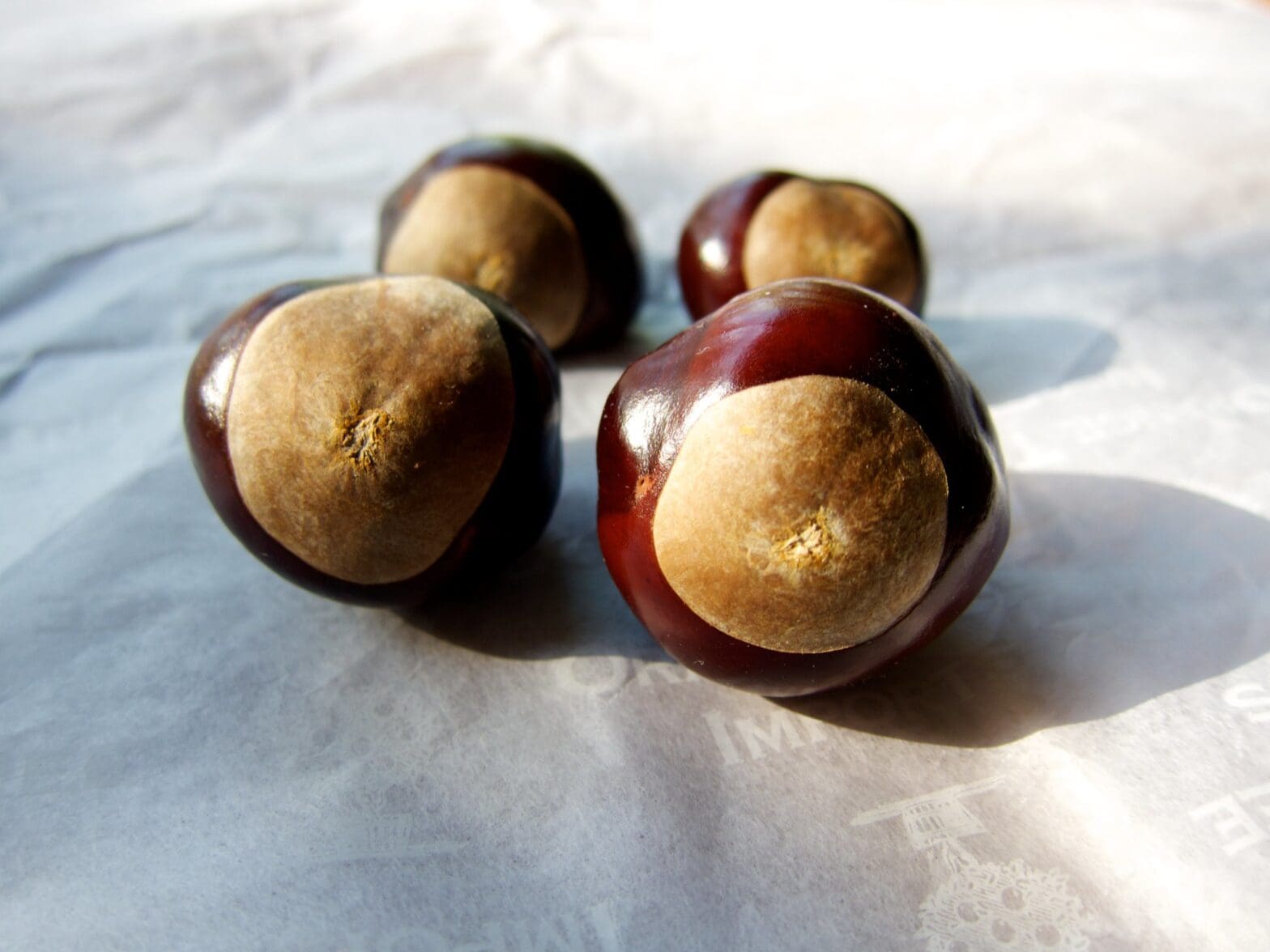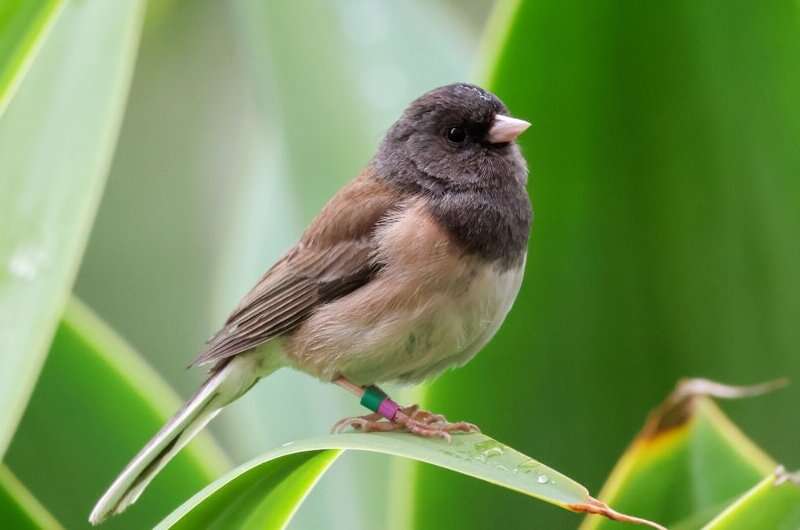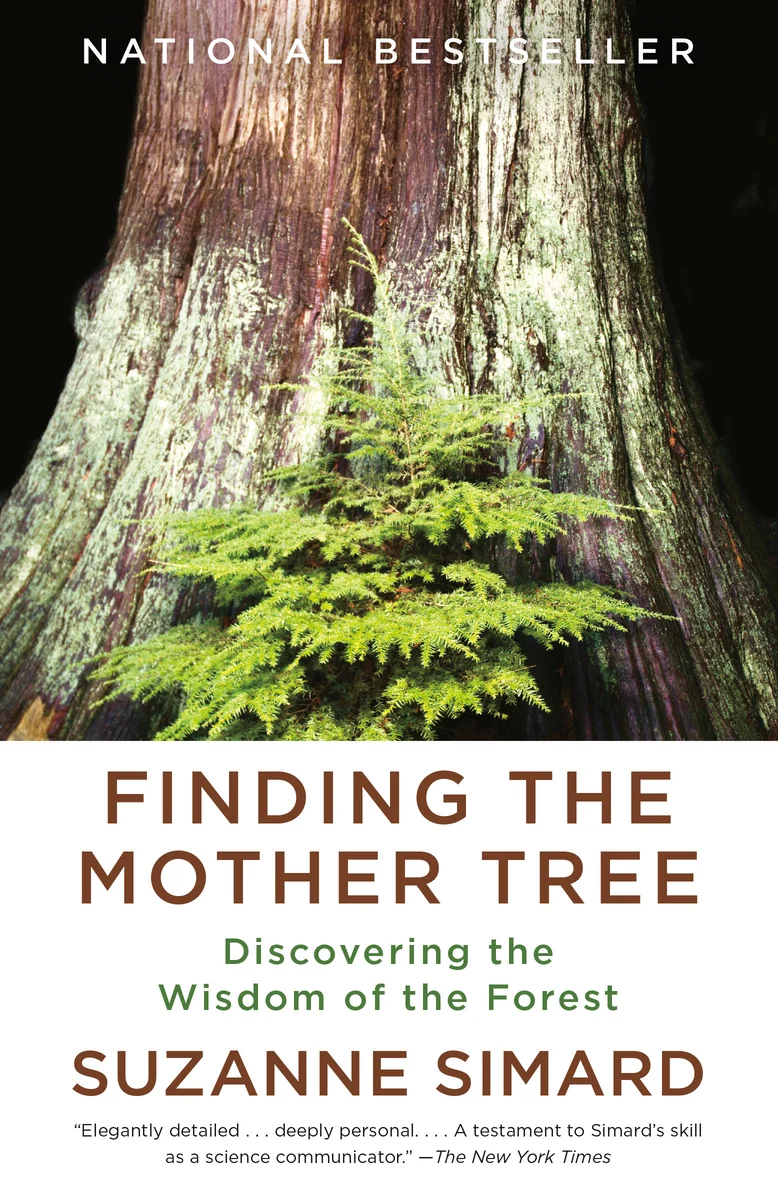What species has a hard outer shell that protects from predation, is found across the Midwest of the United States, and inspired the name of a Big Ten mascot?

Jmasis, CC-BY-NC
The Buckeye Tree (Aesculus glabra)
Growing up in Ohio, otherwise known as ‘The Buckeye State’, the tree seemed to be everywhere. I saw it around my hometown, on THE Ohio State University (OSU) sweatshirts, and featured in the display cases of local stores selling buckeye-inspired chocolate peanut butter desserts. In Ohio, the buckeye is a cultural icon.
These trees are abundant in the Cleveland Metroparks: fields, trails, and forests peppered around the wilderness I’ve wandered with friends and family all my life. I remember seeing a buckeye while visiting an arboretum in second grade. A small plaque beside the tree signified its status as a crucial part of Ohio’s history and ecological community. Each year, as the air cools and jackets become a necessity, I can vividly imagine the Buckeye Tree’s nuts littering the grass, intermixed with yellow and brown leaves – even when far from my home state of Ohio.
But while the tree has become a staple of Ohio’s culture, what makes it stand out within Ohio’s flora and fauna?
Buckeyes typically reach about 30 feet in most understory areas, but can grow up to 70 feet tall. Their flaky, grey trunks reach up to two feet in diameter. The trees have leaves that palmate, or spread out like fingers on a hand, and are typically made up of five-toothed leaflets. They flower from April to May, and their sprouting yellow petals are common charms of Ohio’s spring landscape. Similarly, the pumpkin-orange of the leaves in the fall is integral to most Ohioans’ autumn experience. Lining forest exteriors and park pathways, the buckeye’s noble appearance is appreciated year-round.
Closer up, the tree has small fruits, which are rough capsules that split open when ripe to release nuts (2-5 cm long): the most iconic part of the species. Their smooth, dark-brown exteriors have a lighter, rough spot that imitates an eye and serves as the reason for the trees’ namesake.“Buckeye” comes from the Shawnee word ‘hetuck’, which means ‘eye of the buck deer,’ named so for its resemblance to the deer’s ocular organ. Over time, the etymology of this word has changed, and today it serves as a title of pride for Ohioans to reference the aesthetic, sturdy, and valuable aspects of the tree and its nut.
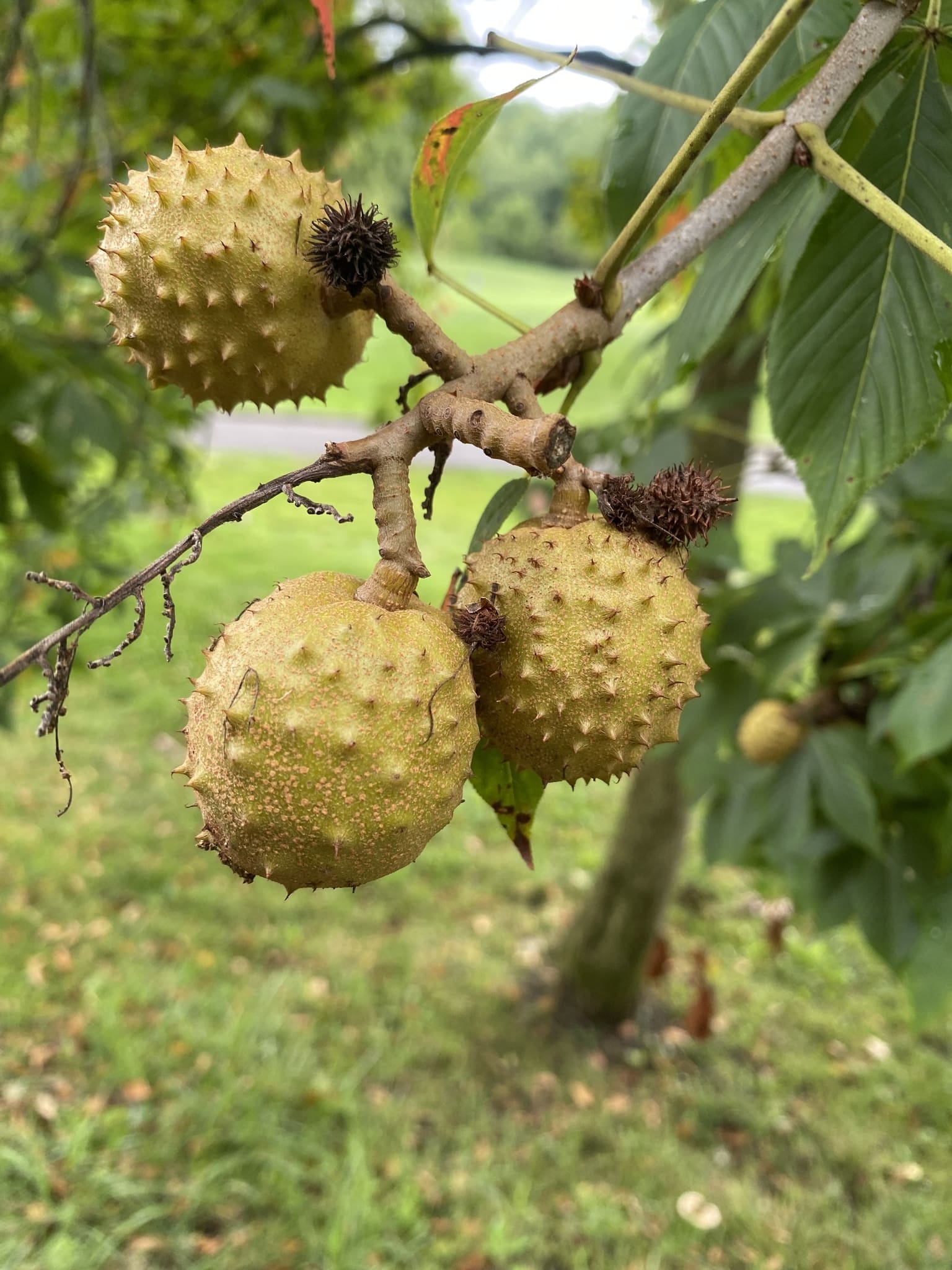
Larry H Moore, CC-BY-NC
Despite its small size, the Buckeyes’ seed hides an elegant, layered defense system like that of a medieval castle.
It’s a great example of plant adaptation to predation. The seed’s large size and sturdy shell help protect it physically, while toxins act as a chemical defense. If a predator can’t crack the tough outer shell, the seed survives to germinate. This ability to deflect predators also means that the genes’ strongest seeds are the ones passed down to the next generation, allowing the population to become stronger and stronger! Still, if a larger predator does manage to break in, the toxins deliver a poisonous surprise that deters future predation (Mendoza & Dirzo, 2009).
While Brutus (OSU’s mascot) has a cheery disposition, the tree’s seed—like those of other buckeye species—is a mighty fighter in a small shell!
Other parts of the buckeye can also be quite dangerous to interacting fauna. The leaves, bark, and fruit are all highly toxic if ingested, primarily because of the high levels of glycoside aesculin, saponin aescin, and alkaloids found in the plant (USDA). While ingestion is dangerous, the buckeye has more topical applications.
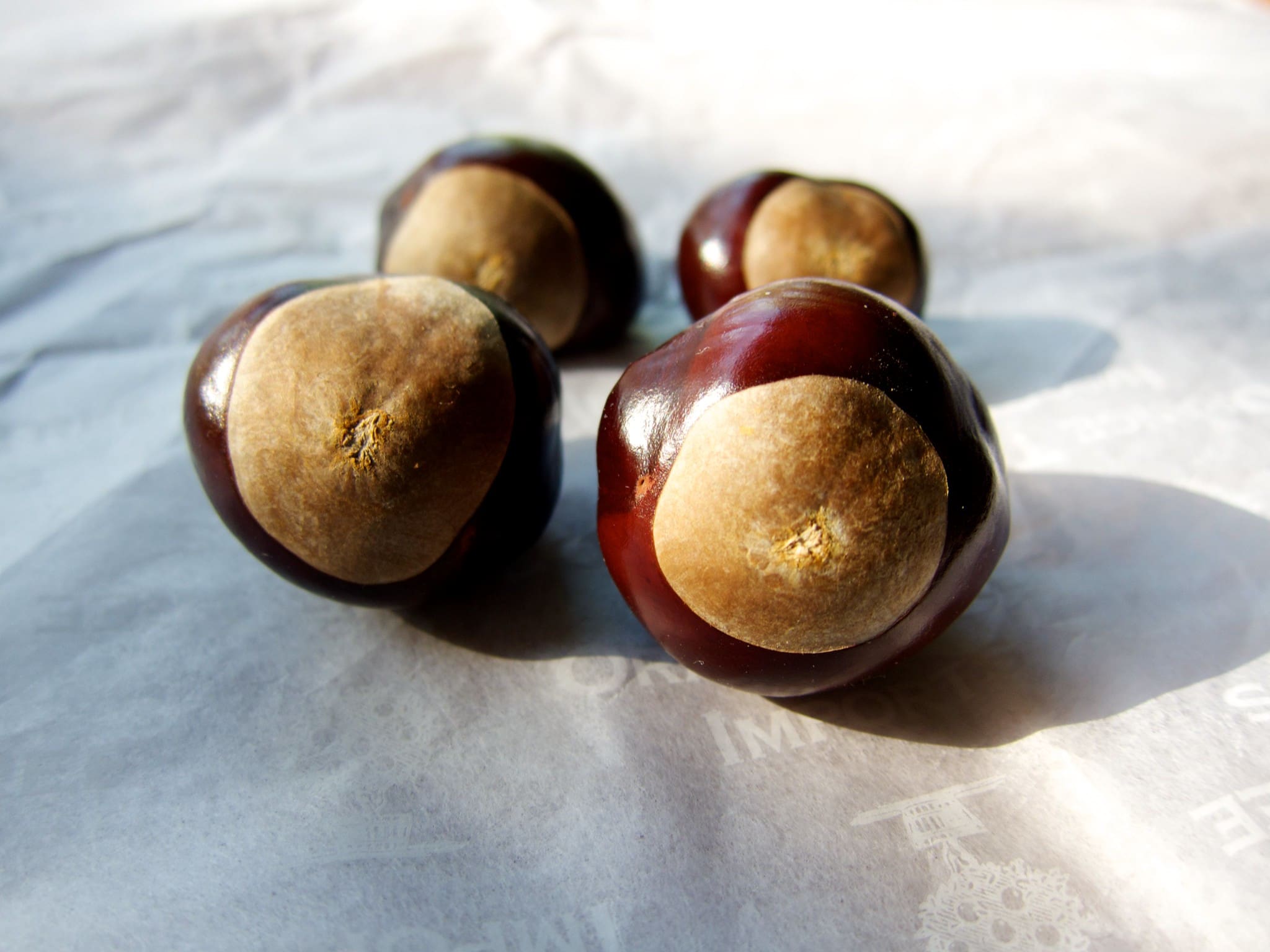
The buckeye has long been used by Indigenous communities across Ohio and the Midwest for its medicinal abilities. Specific compounds in the buckeye, like tannins, contain anti-inflammatory and astringent properties that aid the treatment of swollen joints, rheumatism, and sores on the body.
Recent research is giving new life to the buckeye’s potential as medicine. Scientists at Ohio State have found promising compounds in the tree’s bark that might one day be used to help treat cancer (Velazquez Cruz, 2024). In particular, they discovered antioxidants called procyanidins and signs that some of the bark’s properties may help destroy harmful cells.
Such research demonstrates the importance of listening to Indigenous practices, ecologies and medicines for solutions that come from the native plants around us. In utilizing the tools literally in our backyard, localized knowledge can be used to help fellow ‘Buckeyes’ around the world!

beepmeep45, CC-BY-NC
Changing Habitats and Climate
Current buckeye populations are thriving, but this reality might change if climatic shifts intensify faster than populations can adapt. The USDA Climate Atlas notes concerns over the buckeyes’ ability to properly establish seeds and resist fire topkill (the ability to succeed after repeated interactions with burns) in a warmer climate. Annual coldest and warmest temperatures in areas below Ohio will increase beyond a level manageable if carbon emissions continue at a ‘moderate level’.
Shifts in average temperatures and rainfall caused by emissions will undoubtedly impact the Ohio Buckeye’s current habitat. Already, there is a record of latitudinal shifts; as areas north of Ohio become warmer, buckeye populations in Canada and Michigan have been growing steadily over the past two decades (Henry, 2008). The introduction of the buckeye to these new areas poses a threat to local flora and fauna, as well as the individual species’ ability to grow.
However, the buckeye nut isn’t so easy to crack. Local researchers at Kent State University are studying species mix as a tool for resilience. A large part of their project is utilizing cleared land that has yet to be developed. By turning barren spaces into groves of trees, the project managers are increasing local carbon sequestration, learning about trees’ adaptability, and facilitating species’ growth.
As a powerful part of Ohio’s identity, the buckeye is a resilient contributor to the State’s biodiversity. From the symbolism of resistance encapsulated within the seed, to the untapped medicinal potential of the tree, the buckeye is a part of my personal history that continues to astound me. I want to protect the places I care about from the impacts of a changing climate, while also helping this iconic species continue to thrive in the Buckeye State!

Ryan Hill is currently an undergraduate student at Dartmouth College studying Environmental Studies and Studio Art. He is passionate about the conservation of local biodiversity and learning more about the ecosystems that make up our planet. He takes artistic inspiration from the natural world and admires the beauty of small insect colonies, to widespread old-growth forests.
Dig Deeper
- Suess, J. (2021, September 27). Why are Ohioans called buckeyes? The term was once an insult. The Cincinnati Enquirer.
- Mendoza, E., & Dirzo, R. (2009). Seed tolerance to predation: Evidence from the toxic seeds of the buckeye tree (Aesculus californica; Sapindaceae). American Journal of Botany, 96(7), 1255–1261.
- Velazquez Cruz, M., Salinas-Arellano, E., Castro Dionicio, I., Jeyaraj, J. G., Mirtallo Ezzone, N. P., & Carcache de Blanco, E. J. (2024). Bioactive compounds isolated from the bark of Aesculus glabra Willd. Phytochemistry Letters, 61, 106–114.
- Henry, T. (2008, Oct 13). Climate change called certain and most predictions are bad: Even Ohio’s namesake buckeye said to be at risk. McClatchy – Tribune Business News

